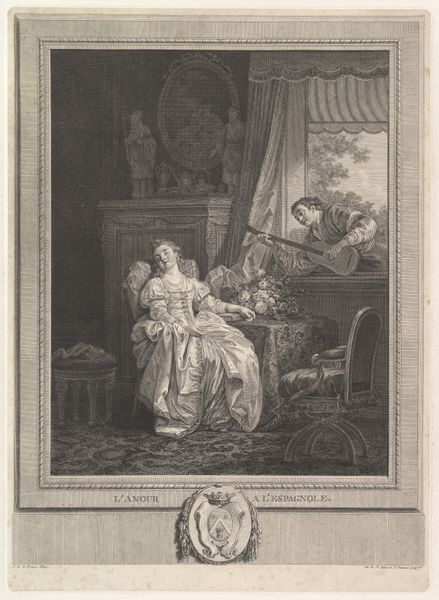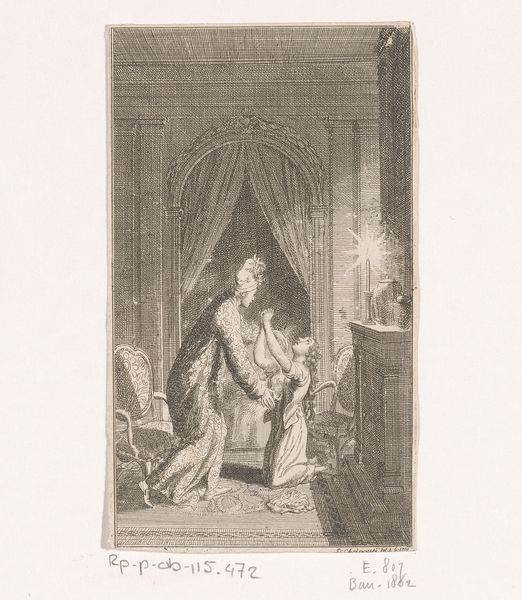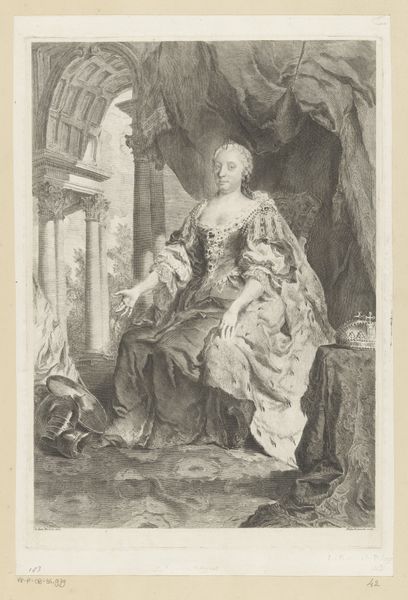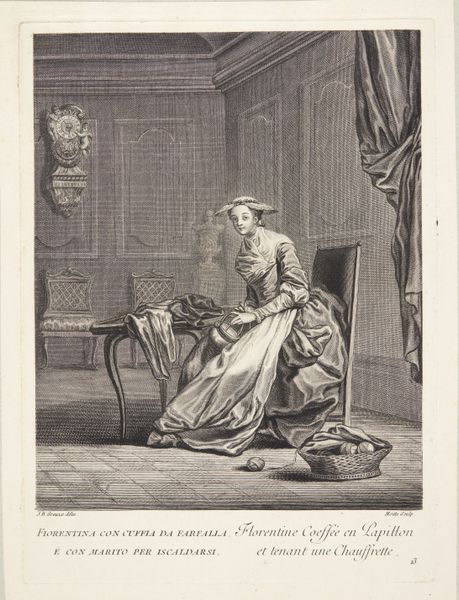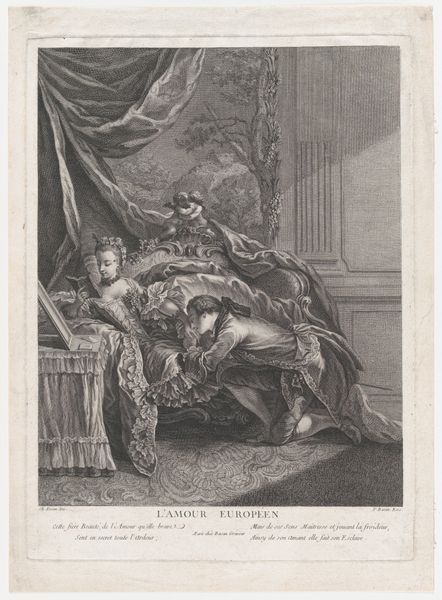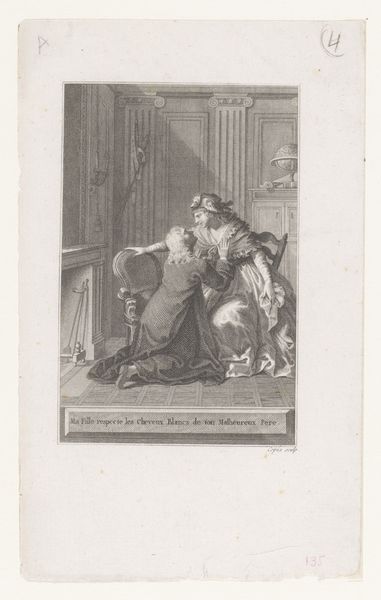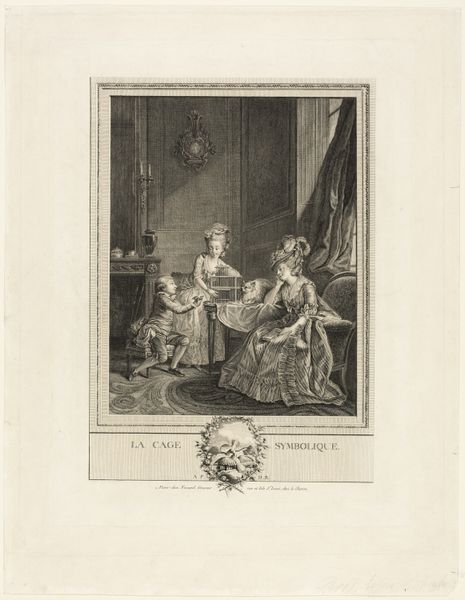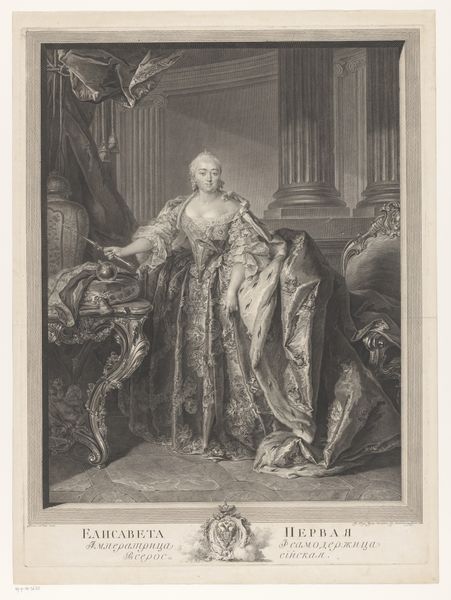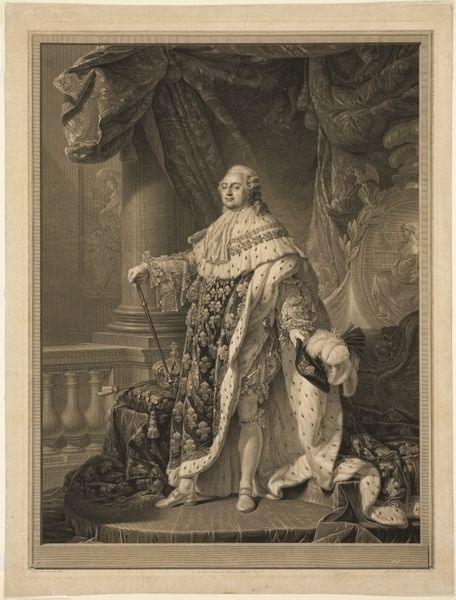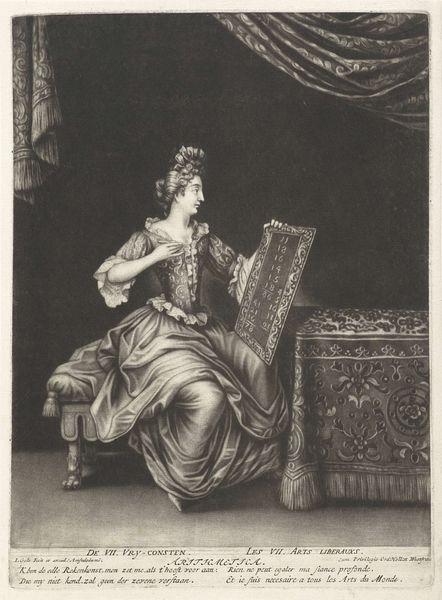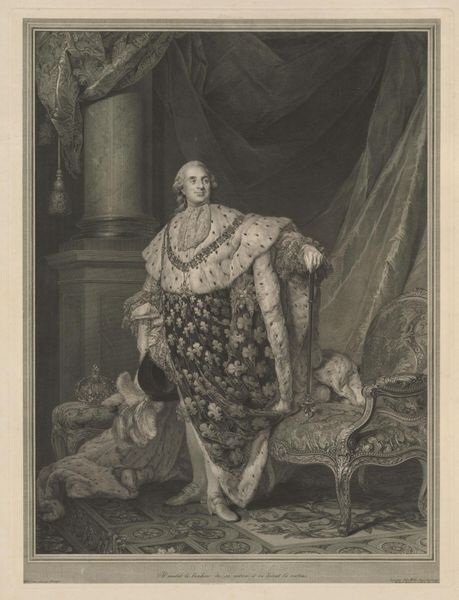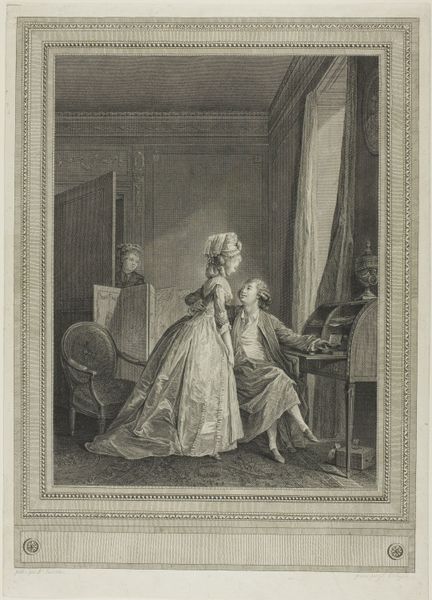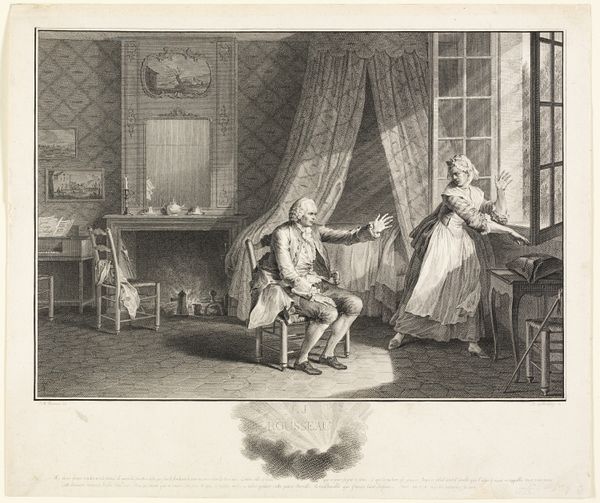
drawing, print, engraving
#
portrait
#
drawing
# print
#
figuration
#
romanticism
#
men
#
line
#
genre-painting
#
history-painting
#
engraving
#
erotic-art
Dimensions: image: 16 9/16 x 13 1/8 in. (42.1 x 33.3 cm) sheet: 21 1/8 x 16 in. (53.7 x 40.6 cm)
Copyright: Public Domain
Editor: This is "La Matinee (L'heureuse Union)", created between 1789 and 1800 by Sigmond Freudeberg. It's a drawing, print, and engraving held at the Metropolitan Museum of Art. It looks like an intimate, somewhat charged moment between a man and woman indoors. What strikes you most about this piece? Curator: What I find most fascinating is how it reflects the evolving social and political climate of late 18th-century Europe. Freudeberg captures a private scene, yet it’s loaded with cultural meaning. The depiction of erotic-art in "genre-painting" reflects a societal fascination with love, marriage, and family dynamics that was both celebrated and scrutinized. It shows the lifestyle of upper-class figures during the Age of Enlightenment in their private boudoirs. How do you view their social standing and the role of artwork like this in that particular historical moment? Editor: That's interesting. I hadn't considered the historical context so deeply, just took it at face value. Their elegant clothing and the detailed interior design suggest a life of privilege. Was this kind of scene meant for public consumption, or was it more for a private audience within that social sphere? Curator: That's a vital question. Prints like these were often circulated among the educated and affluent. While not "public" in the modern sense, they played a role in shaping and reinforcing social norms and ideals. Consider the "politics of imagery": who is being represented, and for whom? What statements were the author trying to make and how was he trying to make them? How do you feel such images contributed to discussions about morality, class, and gender roles during this revolutionary time period? Editor: It makes me think about the power of art to shape perceptions, especially regarding intimacy and social status. It's a bit voyeuristic, really. Now that I see it through this lens, I wonder about the ethical considerations, about romanticizing or judging figures through artistic depictions such as this one. Thank you for the new understanding you've brought me! Curator: And thank you for your insights! Recognizing the interplay between art, society, and politics is essential for understanding art history. These figures from a bygone era can offer us unexpected insights into our current perceptions of intimacy, power, and representation.
Comments
No comments
Be the first to comment and join the conversation on the ultimate creative platform.
